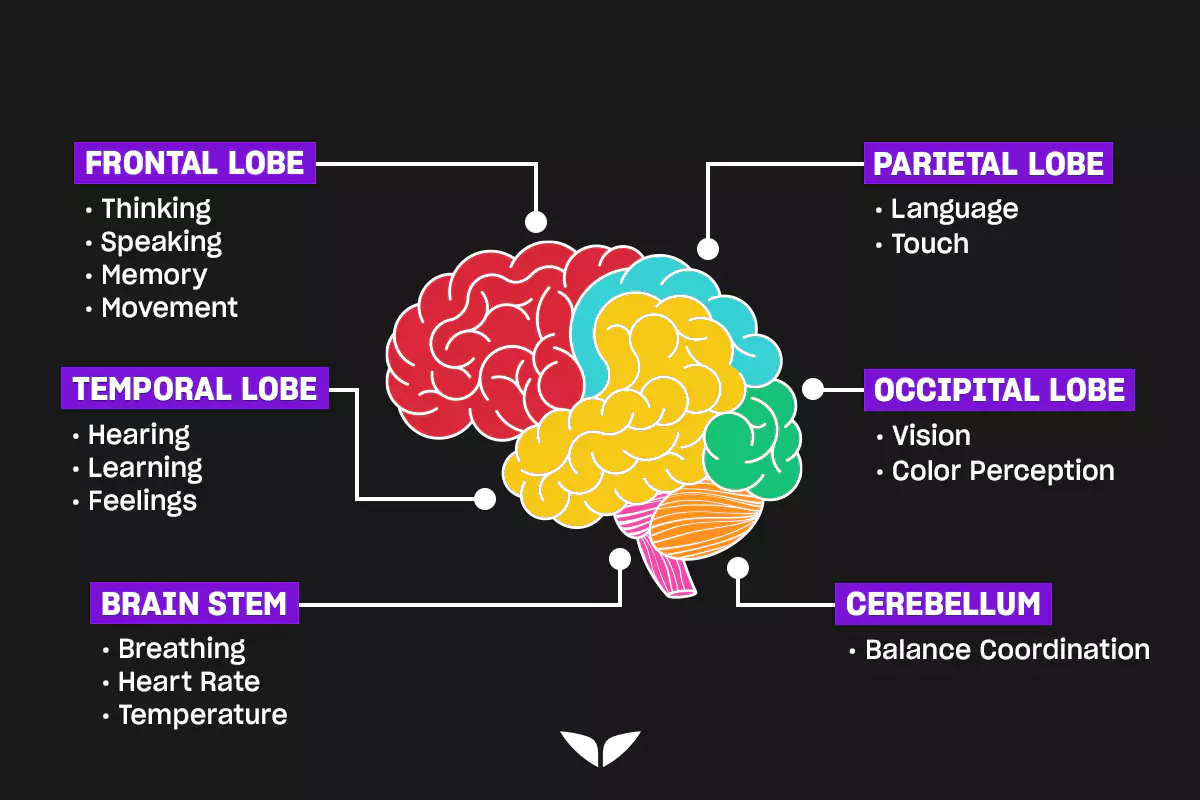It’s a long-standing myth that humans use only 10% of their brains. The fact is, research shows that you’re able to unlock your brain’s full potential by understanding how the cerebral hemispheres of the brain work.
The two hemispheres communicate with each other to control muscle function, speech, thought, emotions, reading, writing, and learning.
Let’s explore what a cerebral hemisphere is, where it is located, and the specific functions of each part of the hemisphere.
What Is a Cerebral Hemisphere?
The brain, which is found inside the skull, is the epicenter of the nervous system. Its biggest part, located at the top of the head, is called the cerebrum.
The cerebrum is divided into two parts, which are called cerebral hemispheres. A hemisphere is half of a sphere.
So, every person’s brain has two hemispheres, each controlling the opposite side of the body. The right hemisphere of the cerebrum controls the functions on the left side of the body. And vice versa.
Therefore, the cerebral hemispheres are crucial for our well-being as they support cognitive functions and store memories.
Where are the cerebral hemispheres located?
As you now know, the cerebrum is the biggest part of the brain and takes up to two-thirds of the whole organ. It’s located at the top of the head, specifically on the left and right sides of the brain stem.
What Are the Specific Functions of Each Cerebral Hemisphere?
Each of the two hemispheres has its own functions in what experts refer to as lateralization. The right cerebral hemisphere helps with vision independence, sense of touch, and object recognition. On the other hand, the left cerebral hemisphere assists in language, logical reasoning, and comprehension.
The hemispheres communicate through a wide, flat bundle of neural fibers called the corpus callosum.
At first sight, it’s pretty obvious that each cerebral hemisphere has its own dominant functions.
The left hemisphere is responsible for speech, logical reasoning, and language processing and comprehension. And right—responsible for spatial tasks—identifying objects and spaces with any other senses apart from vision.
That’s probably why so many people believe they are left or right-brained. And even though each of the hemispheres has some dominant functions, both of them are directly involved in most of the bodily processes.

What Are the Major Regions of the Cerebral Hemispheres?
Each of the hemispheres has four lobes: frontal, parietal, temporal, and occipital. So, here are the functions of the different lobes:
1. Frontal Lobe
Firstly, this region controls:
- Judgment, problem-solving, and planning
- Behavior, personality, and emotions
- Body movements
- Speech, writing, and speaking
- Concentration, self-awareness, and intelligence
2. Occipital Lobe
Secondly, this lobe has one sole purpose: interpreting what you see, including identifying color, movement, and light.
3. Parietal Lobe
And this region is responsible for:
- Interpreting language and words
- Spatial and visual perception
- The sense of touch, temperature, and pain
- Interpreting signals from visual, motor, hearing, memory, and sensory
4. Temporal Lobe
Lastly, this part is in charge of:
- Understanding language
- Hearing
- Memory
- Sequencing and organization
Therefore, all these parts work together to help you with your daily tasks making you more efficient.
So, the brain has the ability to adapt to a process called neuroplasticity. And in case of damage, one of the hemispheres has the ability to take on extra functions, which is common in young brains.
Thus, like a muscle, you can train your brain to become better.
It’s not about mental intelligence, it’s about mental fitness. — @jimkwik Share on X







